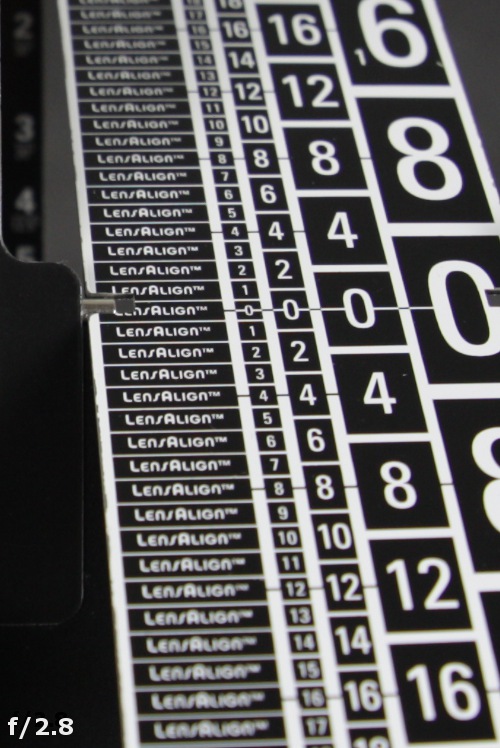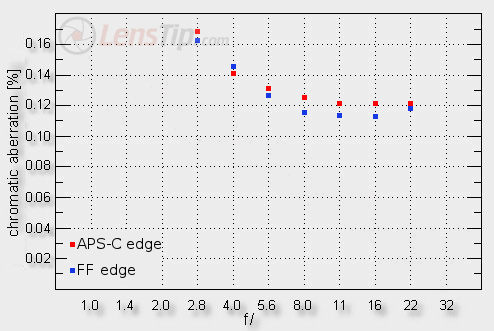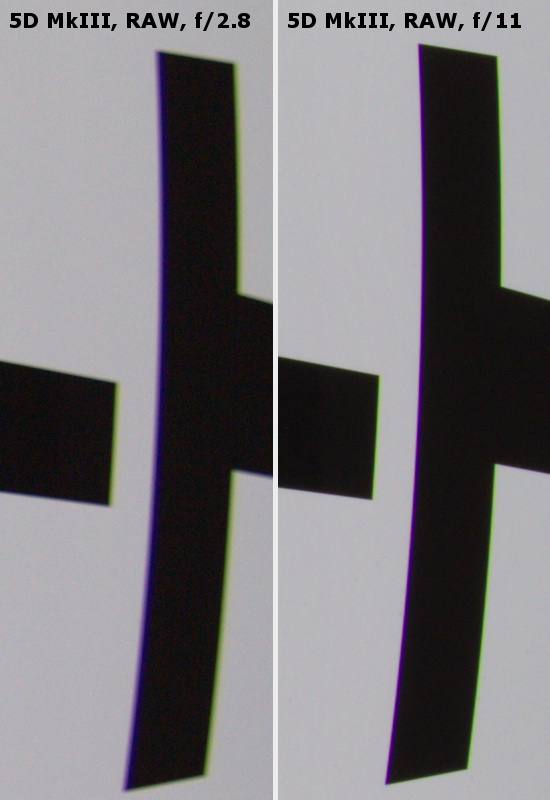Samyang 12 mm f/2.8 ED AS NCS Fish-eye
5. Chromatic and spherical aberration
The photo below shows clearly that the tested Samyang manages to correct the longitudinal chromatic aberration very efficiently. It would be difficult to find a noticeable colouring of defocused images even far from the depth of field centre.
 |
Please Support UsIf you enjoy our reviews and articles, and you want us to continue our work please, support our website by donating through PayPal. The funds are going to be used for paying our editorial team, renting servers, and equipping our testing studio; only that way we will be able to continue providing you interesting content for free. |
- - - - - - - - - - - - - - - - - - - - - - - - - - - - - - - - - - - - - - - - - - - - - - - -
The situation changes when the lateral chromatic aberration is discussed and you can find out that much by looking at the graph below.

Near the maximum relative aperture we observe values which should be called high. Only after stopping down the aperture by about 1.5 EV the aberration decreases to a medium level.
 |
Spherical aberration
We didn’t manage to get circles of light of a sensible size in front of and behind the focus at the same time. A large depth of field makes it also difficult to check whether the tested lens has a ‘focus shift’ effect. Still as we didn’t notice even the slightest traces of spherical aberration we assume the Samyang 2.8/12 doesn’t have any serious problems with it.






